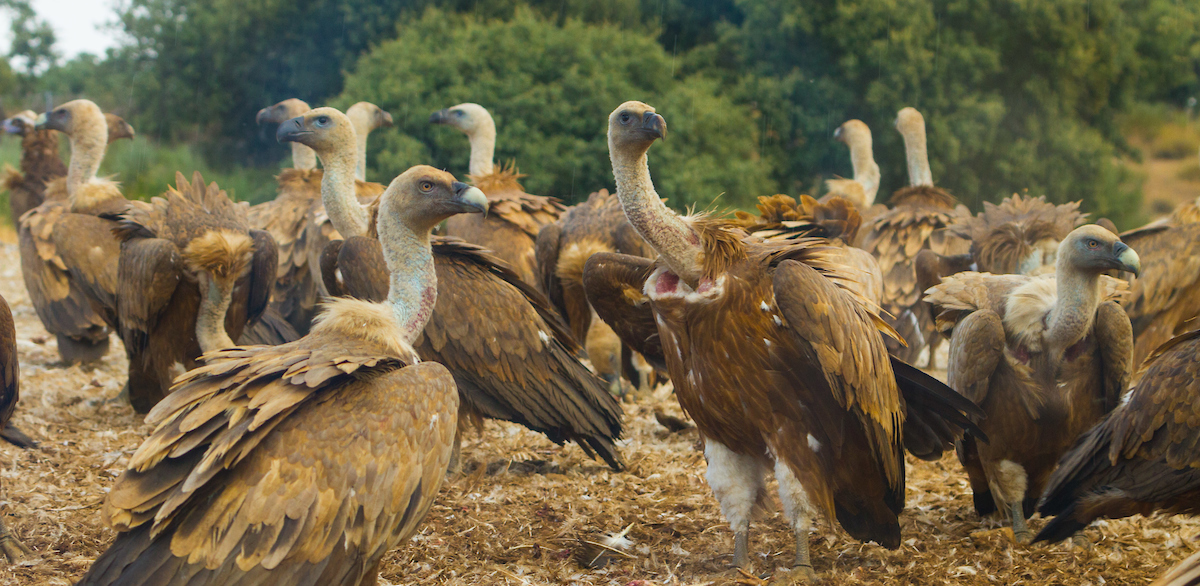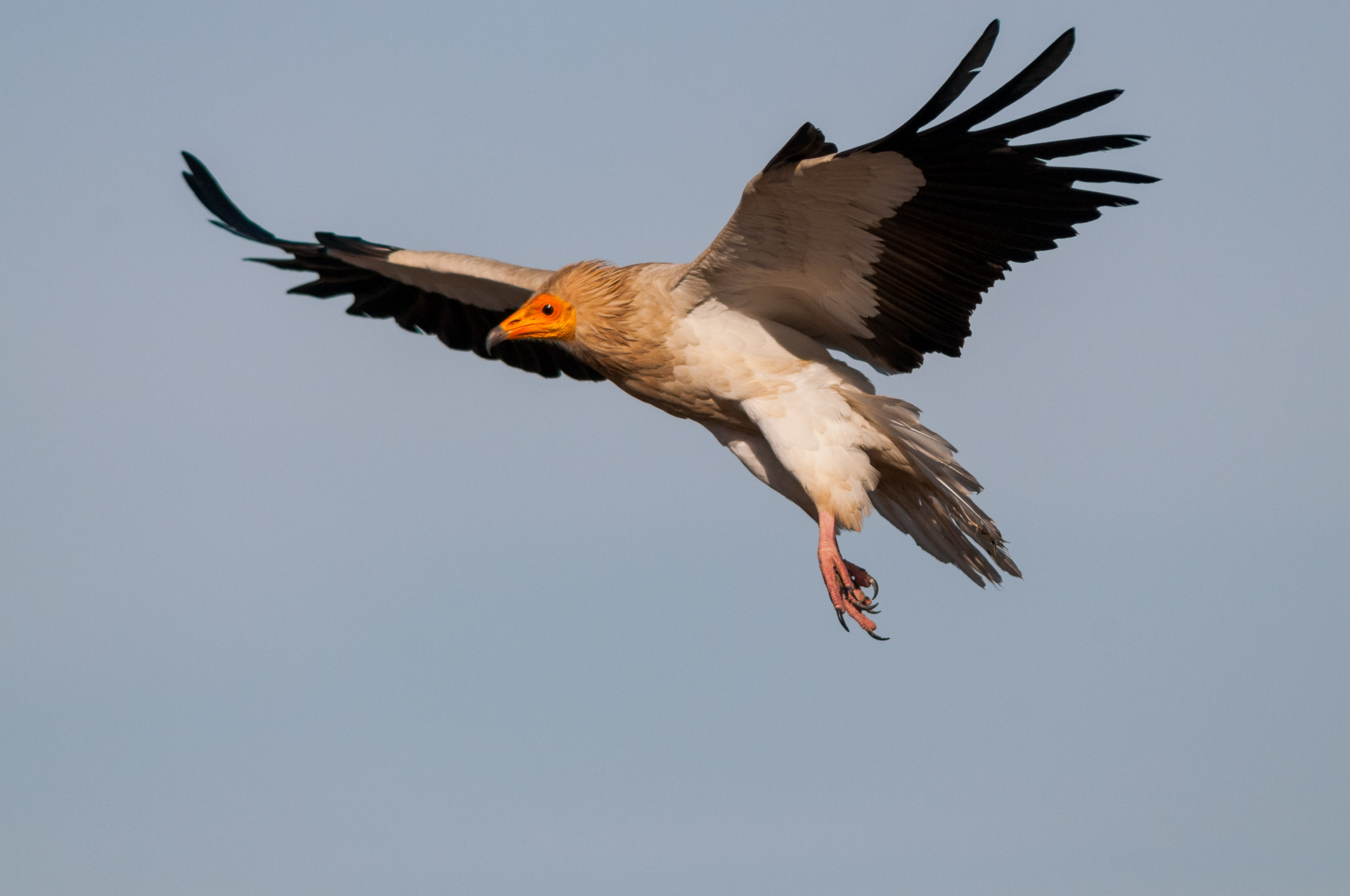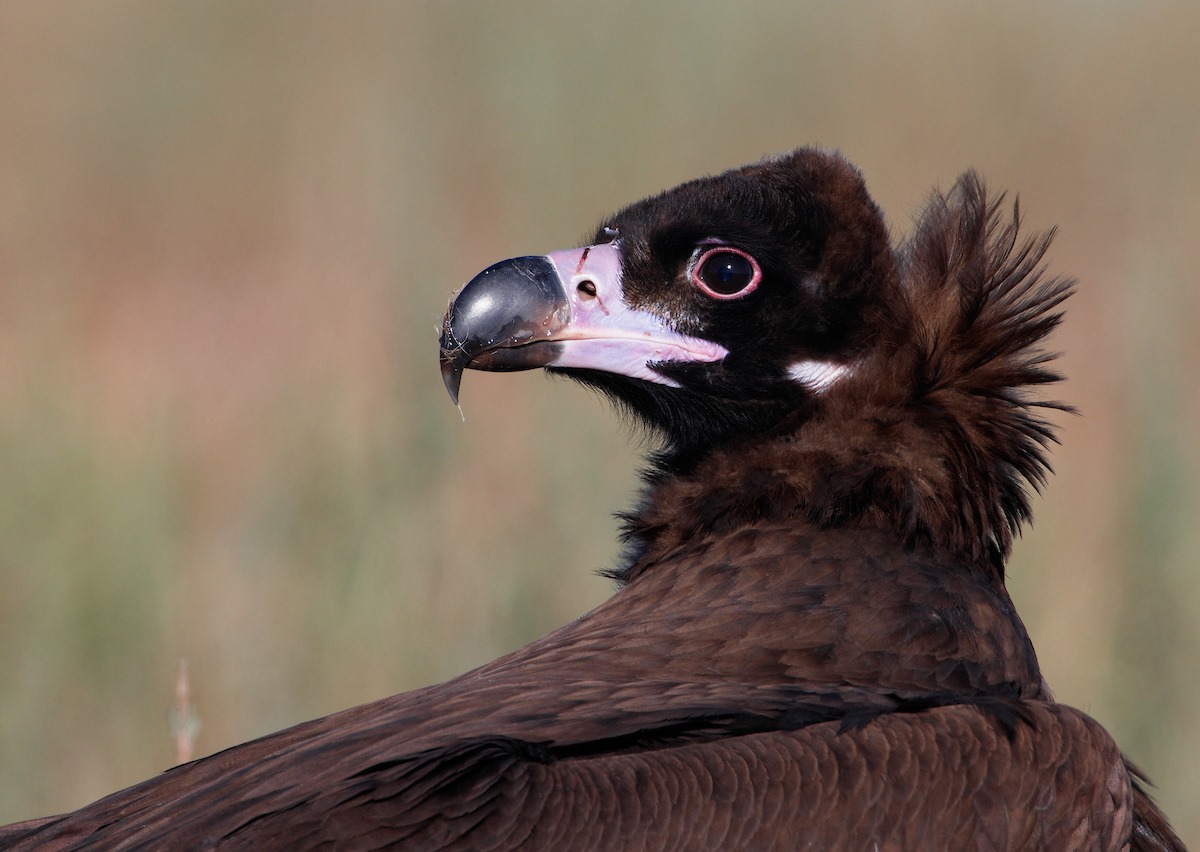The increase complaints of vulture attacks has caused several moments of tension among local communities. It is increasingly important to analyze situations individually and unite the various stakeholders to find solutions that avoid situations like these and that can improve coexistence between species and the surrounding local communities.

The vultures in Portugal
In the Iberian Peninsula, there are four species of vultures: the griffon vulture (Gyps fulvus), the black vulture (Aegypius monachus), the Egyptian vulture (Neophron percnopterus), and the Bearded vulture (Gypaetus barbatus), occurring currently the first three species regularly in Portugal, but all at risk of extinction, with the exception of the griffon which has more numerous and stable populations.
Vultures are scavenger birds, which feed almost exclusively on the corpses of dead animals. Unlike other large birds such as eagles, vultures do not have sharp beaks and claws or a nimble flight adapted to hunting live animals in good health. Only the smallest of the Iberian vultures, the Egyptian vulture, occasionally hunts small prey, especially reptiles such as lizards and tortoises.
The vultures’ biology is well adapted to their scavenger food. The great wingspan of the wings allows them to make gliding flights of hundreds of kilometers in search of food. Vultures have excellent eyesight which they use to detect dead bodies from high distances. Contrary to what is often said, vultures do not detect carcasses or dying animals through smell, decay or blood, as all vulture species in Europe, Asia and Africa have a very weak smell capacity. Only a few species of vultures in the Americas use the smell of decaying meat to find food.

Reported conflict situations and possible reasons
Since the 1990s, there has been an increase in complaints of deadly attacks on domestic animals in the Iberian Peninsula, especially sheep and cows, by a particular species of vulture, the griffon vulture. However, a study on the subject found that most cases correspond to animals already dead from other causes. [i]. When it comes to actually feeding on live animals, there are usually other factors involved. If a domestic or wild animal is in a moribund state due to severe injuries, malnutrition or advanced symptoms of disease, and unable to move, it may also attract the attention of the vultures. In most of these cases, when vultures approach and try to feed on an animal that is still alive, they are just anticipating an outcome that is almost always inevitable for other reasons.
Domestic animals in complicated births can also be more vulnerable, as they are temporarily immobilized, and in the eyes of a vulture they can represent a corpse. Some less rustic but more productive breeds of cattle, such as the Charolais, widely used in the Greater Côa Valley region, are at greater risk for having more difficult births and requiring human assistance. for the reasons mentioned above. These risks can be avoided if animals give birth inside covered structures or are protected by a shepherd or guarding dogs.
There is also the case of the Limousine breed, which, not being a difficult birth breed, is advised that as a large species, insemination should be used or opt for natural breeding of a medium/small breed or that has as main ability to calving easily, as is the case of Angus, exotic breed, or autochthonous breeds such as the case of Arouquesa or Jarmelista. In addition, it is necessary, in most cases, for the cow to be over 18 months of age and have had good food to be ready and have enough body to have a normal birth without major complications.
For producers who still choose this type of breeds that are more difficult to give birth and who do not have time to be around to monitor the situation for 24 hours in the week expected for the birth, it is essential to opt for birth sensors, the only completely efficient way to avoid loss of animals during parturition, which can happen for many reasons and not just attacks on weak animals at that time.
Paradigm shifts in livestock
The increase of complaints of attacks by vultures and other wild animals on livestock coincides with major changes that have taken place over the last few decades in livestock practices in Europe. Currently, a large part of the cattle is in extensive regime and graze in parks throughout the year, with an increasingly reduced presence of people and guarding dogs, which facilitates contact between domestic animals and wildlife. On the other hand, the absence of the producer at the time of the death of his animals makes it difficult to determine the causes, and later when he comes across the corpse surrounded by several vultures, he may wrongly assume that they are responsible.
In fact, vultures have always played an important role in the landscape, removing dead bodies from both wild animals and extensive livestock, preventing the spread of diseases and contamination of soil and water. Almost all pathogens are destroyed by the vultures’ digestive system. [ii]. A good example of this is that one of the species, the black vulture, frequently feeds on wild rabbit carcasses, reducing the risk of contagion from the diseases that have caused the decline of this species, namely myxomatosis and hemorrhagic fever .

After the implementation of new health legislation after the bovine spongiform encephalopathy epidemic (the “mad cow disease”), European vulture populations lost most of the available food, as the new measures forced the immediate removal of corpses from the field. On the other hand, despite being illegal, the practice of abandoning corpses in pastures has not been totally eliminated. Often resulting in situations with greater health risk, dead animals are sometimes heaped in places hidden from the authorities responsible for inspection, and where scavenger species have greater difficulty in decomposing the corpse, leading to its slow rot and a greater probability of contamination of the environment.
Recently, new legislation has been put into practice in several countries, including Portugal, providing the licensing of the legal and controlled deposition of corpses on livestock farms, so that scavenger birds can once again play their role as “cleaning brigades ”.
The recovery of food availability for scavenger birds, through the implementation of these measures and the recovery of wild herbivore populations, as well as the adoption of good livestock management practices, contributes to a harmonious coexistence in which everyone wins.
Within the scope of the project “Scaling Up Rewilding in the Greater Côa Valley”, Rewilding Portugal and its partners are working with local cattle producers and the responsible authorities, namely the ICNF and DGAV, to implement these measures in the territory.
Crimes against wildlife
These new situations of conflict have, in recent years, caused several moments of tension between local communities, namely livestock producers with losses, and this scavenger species, which has led to a growing number of crimes committed against wildlife and more specifically against this species, with the existence of several records of cases of poisoning.

The last known case refers to the month of June, where the corpses of 54 griffon vultures, a black vulture and a black kite were found in Salamanca, in the town of Monterrubio, after having consumed sheep meat that had been left in the location for these. Several analyzes were carried out on the corpses and the rest of the meat collected at the site, which identified the poisoning as being caused by carbofuran, one of the most toxic pesticides and with banned use in the European Union (EU) since December 2007 [iii].
Also in Portugal there have been some cases of poisoning of this species, namely in the Greater Côa Valley in October last year, where three griffon vultures were discovered with suspected poisoning in Vilar Formoso, with these suspicions being confirmed after further analysis of the corpses [iv]. Already in the previous year, the poisoning of two Egyptian vultures in the Douro International Natural Park had been confirmed after an autopsy performed on them [v].
It is increasingly important to unite the various stakeholders to find solutions that avoid situations like these and that can improve the coexistence between the species and the surrounding local communities.
The project “Scaling Up Rewilding in the Greater Côa Valley” is financed by the Endangered Landscapes Programme and coordinated by Rewilding Europe, in partnership with Rewilding Portugal, the University of Aveiro, ATNatureza and Zoo Logical.
________________________________________________________________________________
[i] Margalida, A, Campion, D. & J. Donazar (2014) Vultures vs livestock: conservation relationships in an emerging conflict between humans and wildlife. Oryx, 48(2), 1-5
[ii] Houston, D.C., Cooper, J.E., 1975. The digestive tract of the Whiteback griffon vulture and its role in disease transmission among ungulates. Journal of Wildlife Diseases 11, 306-313.
[iii] https://www.wilder.pt/historias/matanca-de-56-abutres-em-espanha-deveu-se-a-envenenamento-com-pesticida-proibido-na-ue/
[iv] https://www.forumcovilha.pt/noticias/noticia/?idn=18833
[v] https://observador.pt/2018/11/15/duas-aves-morreram-envenenadas-no-parque-natural-do-douro-internacional/